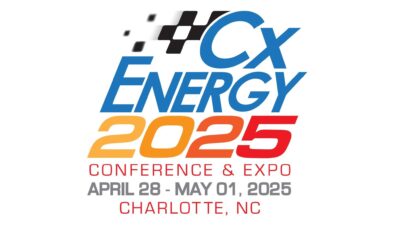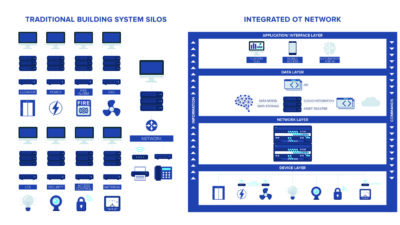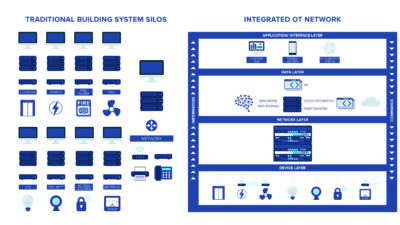The process of selecting a standby generator either can be relatively quick or agonizingly slow. How you approach the specification, purchase, installation and maintenance issues will ultimately influence the speed—or agony—of your genset purchase. But first, one needs to ask some questions:
Why would I need a generator for backup power? What happens in your facility when the power goes off? Do the employee’s simply go home to wait out the event? What do you have to do to start the facility or process back up? Are there machines that need to runoff the excess material in order to start anew?Are there machines that after a power outage need to be cleaned out in order to be restarted? How much material did you just consume in waste or scrap because the process wasn’t completed in time? How long does it take to get started again and do you know what the resulting costs are? Is it possible that lives may be at risk, for example, from being stuck in elevators or automatic access areas?
If you had answers to these questions, or you were able to ask more probing questions, then you probably need a backup power source for your facility. That backup power may only be the need to keep the computers running, or safely lower people from elevators. Or maybe the power is needed to keep your retail stores cash registers ringing, or the phones up and available for your call center or worldwide computer network operating. Or maybe the boss just wants to make sure he gets the most out of all the operators and machinery even when a storm hits or the power company blips.
How many generator choices are there? The short answer is: A lot! But similar to most systems you deal with every day, when you break down the whole project into smaller pieces the task becomes easier. Before you start to specify a genset you need to make sure that you know want you to do with it. Some of the questions you should be asking are: When are you expecting to run the genset?In an emergency, during a storm, when the power company lets you down or doesn’t want to supply all your usage during high demand periods? Are you trying to save energy costs by running when the utility costs are high or do you have free fuel to use up from another part of your manufacturing process? Do you want to power your whole facility or just the part that is costly to live without when the power goes away? Are you expecting the genset to supply power for future facility expansion? What does it cost to operate a generator? How much maintenance will you need to supply on an ongoing basis? Are there any permits required before you place the genset in service? Are there any environmental impacts of locating a genset on site?
Which fuel is right for the facility? The answers to some basic questions will lead you to some cost analysis of using engine-driven gensets and the fuel consumption and delivery charges. “Hold on there,” you think, you are expecting to burn some fuel, but “what is the impact of delivery charges?”
There are three major types of fuel used for standby generators: diesel, liquid propane (LP) and natural gas. Diesel and LP are certainly the most popular choices if you’re trying to operate independently of the fuel supplier in times of disaster or emergency. In both cases you already have the fuel in a holding tank ready to run. Diesel is probably the most preferred since you can store it unpressurized, unlike LP. In some locations such as hospitals or nursing homes, pressurized storage might not be acceptable or preferable.
If you select natural gas as the fuel, you’re typically dependent on the local gas company to supply the fuel in time of disaster. And, there’s typically no holding tank to supply the fuel if the gas company can’t pump it to you. However, if during a disaster you aren’t expected to power your facility, natural gas is probably the most convenient fuel to use, especially if the pipe from the gas company comes close to your location. Once the natural gas fuel connection is made, there’s no reason to call the diesel or LP truck to come fill up the tank!
By the way, how big a tank did you specify for your diesel or LP genset? Can you imagine what would happen if a big storm blew by and the truck couldn’t get to your facility to fill you up for a couple of days? Oops, well let’s hope the storm was big enough that your facility is not expected to have any output anyway. Did you contract with the fuel supplier to be one of the high priority customers in times of disaster? Or are you just planning to call them when you need fuel?Oops….
How big a generator do I need? Again there’s a short answer: That depends. It depends on what electrical loads you want to power and how you sequence the load applications. Are you planning to power lights only, industrial machinery that use electric motors, heating or air conditioning, water pumps or emergency equipment?
Lighting for example is a somewhat linear load. Only a small amount of additional power is required to start the lights than to operate them continuously. Be aware there are some lights that may have increased starting characteristics. Check with your lighting suppliers just to make sure before you get too far.
Machinery that uses electrical motors with inductive style loads typically will have an increased starting power requirement as compared to the continuous power required for normal running. If the motors are using motor controls (drives) or soft starts, the starting power requirements will be somewhat reduced as compared to flipping a switch for across the power line starting. A typical motor starting across the line can draw as much as five or six times the normal running power in kVA. If the typical genset will supply about three times its rating for a short amount of time, you can easily see a typical generator will start a motor across the line that’s about one-third the size of the generator rating. You might want to consider using a modern motor controller that may cause the motor to only draw 1.5 times the normal running kVA or less during starting. You may also want to consider staggering the start sequences of motor loads as seen by the generator, in order to give the generator a chance to recover from a motor start before another motor is connected. Otherwise a generator as large as the normal power grid supplied to your facility would need to be considered.
Don’t let all this sizing stuff worry you too much. Most genset manufacturers have a genset sizing program available to help you understand electrical loads and select what size generator you need for your facility. Before you start the sizing program, you might want to survey your facility and write down the nameplate data for all the loads you expect the generator to operate. Also think how you might sequence the loads if necessary to get the genset to be a little smaller or to provide additional overhead for future expansion.
Speaking of overhead, when you drive your car, do you floor it all the time going down the interstate? Probably not. So when you size your generator, you probably don’t want to size it to be floored all the time either. Sizing for 80% of the capability of the genset usually provides a reasonable margin and additional overhead, unless you’re thinking of expanding your facility. Besides the additional overhead may be needed when the filters clog a little, or the fuel is a little stale, or the oil is a little dirty, or Murphy shows up one hot, dry day.
Electric motors usually power heating, air conditioning and pumps somewhere in the system itself. Make sure you take them into consideration when sizing a genset. If any of those comfort or safety systems are considered to be “emergency,” special operating considerations may apply when powered from a genset. It’s best to check with your local authority having jurisdiction to make sure you meet any emergency requirements for your location.
Once the genset is installed, are my worries over? Yes, absolutely!But… if, … as long as … you may want to … It’s never really that simple, is it? You’re power worries may be over! And the resulting difficulties in your facility from a power outage may also be over! But, are you sure the standby generator is going to run when you need it? How aboutwhen you need it really, really bad? Naw, come on, they always work, my car never, ever left me stranded. Even when the oil was low and really dirty, and even when that neighbor kid put sugar in the fuel tank! There was that one time though—I forgot to fill up the tank.
Maintenance? You’ll need some!Poor maintenance or even worse—none at all—could make all your hard work and effort to properly select, size and install a genset be wasted if it doesn’t power up when you need it. Most stationary gensets are used with automatic transfer switches that monitor the utility power and automatically start the genset if the utility power goes away. The transfer switch also contains the high power contacts to disconnect the utility from the building and connect the genset to the building when needed. Slightly more sophisticated transfer switches also can be set up with a built in timer to automatically start up the genset on a regular time schedule in order to verify the genset is operational. If it doesn’t start up and run, an alarm is usually set off to warn you of the failure. If the genset were not going to run properly, when would you rather find out, during the scheduled exercise period, or during a power outage?
So plan on some exercising of the genset. Yes, you’re going to burn some fuel, and yes you’re going to use up some life of the engine consumables like oil, coolant, and filters, etc. But it will be worth it to have confidence the genset will run when requested. You probably need to make sure you plan for scheduled exercising and maintenance for your new genset in your facilities maintenance budget. How much should you plan for? Depends. Sound familiar? The bigger the genset, the bigger the engine and expense for operation and consumables.Most genset manufactures recommend exercising the genset for about a half hour of run time, once a week. The schedule is really up to you and any local codes that may affect operation and yearly run time of the genset. What you’re shooting for is to ensure the genset starts and runs long enough to heat up all the components.
It was estimated that in the aftermath of recent storms along the southern coast of the United States that as many as one-third of the backup generators didn’t start and operate when needed. Most of those reported had little or no maintenance performed since the date of installation. Maybe the owners thought the cost of regular maintenance was too high? I’d probably ask what the cost of installing a genset that doesn’t work when needed? If you’ll spend a little time answering the questions in the beginning of the project, I suspect you’ll already know the answer!



